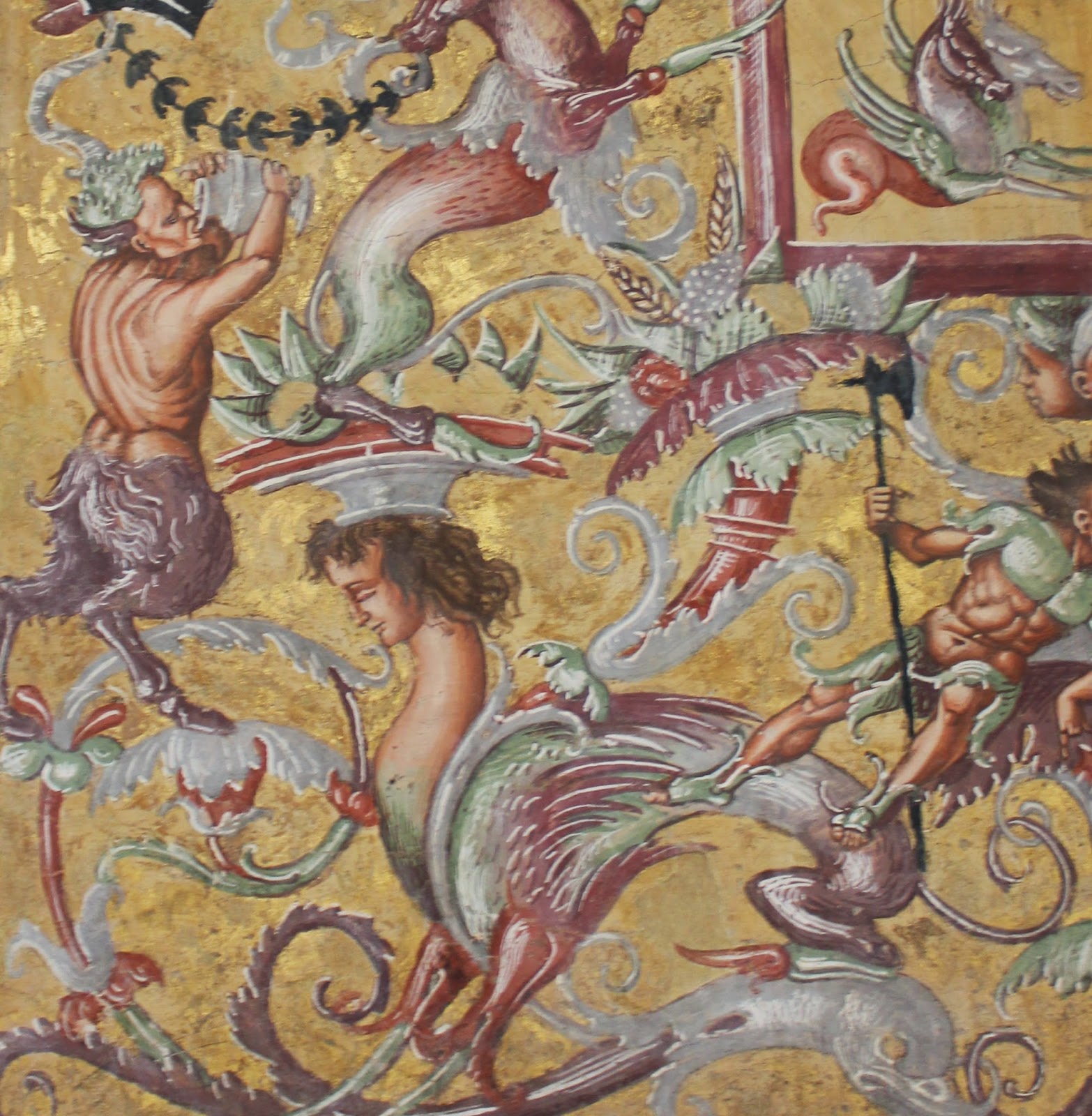San Brizio Chapel - Orvieto Cathedral
Not far from Rome, in Umbria - once part of the Papal States - lies the beautiful Medieval town of Orvieto which is the home of one of the greatest Duomos of Italy - a splendid Medieval Cathedral. The Duomo houses a renowned gem: the San Brizio (sometime bishop of Spoleto and Foligno) Chapel in the right transept which houses a cycle of frescoes by the greatest artists of the Renaissance: the very early Fra Angelico (who decorated the beautiful monastery of San Marco in Florence and the Cappella Niccolina in the Vatican) and Benozzo Gozzoli (who decorated the Magi Chapel in the Medici Palace in Florence and worked with Fra Angelico in Rome) and finally, though a bit later, Luca Signorelli, the Tuscan master from Cortona who was even among those great artists who decorated the Sistine Chapel with a beautiful fresco representing the Testament and Death of Moses.
Fra Angelico and Benozzo Gozzoli started the decoration of the vault in 1447, painting only two sections: Christ in Judgement and Angels and Prophets - as they were suddenly called to paint Pope Nicholas V Niccolina Chapel in Rome.
Perugino was asked to resume the work in 1489, though he never began.
After being abandoned for almost 50 years the decoration of the rest of the vault was awarded to Signorelli on 5 April 1499. He added scenes with the Choir of the Apostles, of the Doctors, of the Martyrs, Virgins and Patriarchs.
His work pleased the Cathedral chapter so much that they assigned him to decorate the large lunettes of the walls of the chapel with frescoes. Work began in 1500 and was completed in 1503.
This is considered the most refined and complex work by Signorelli. He and his school spent two years creating the perfect series of frescoes representing the Apocalypse and the Last Judgement: the first scene represents the Preaching of the Antichrist, continuing with the turbulent episodes from the End of the World and its counterpart: the Resurrection of the Flesh. The last scene represents the Damned taken to Hell and received by Demons. On the wall behind the altar, Signorelli depicts on the left side the Elect being led to Paradise and on the right side the Reprobates driven to Hell.
To these outstanding scenes he also added some interesting details:
- The Preaching of the Antichrist was executed shortly after the death of Savonarola, a popular friar who had been judged guilty of heresy and the Antichrist is causing turmoil just as Savonarola did. The Antichrist may resemble Christ but he is being embraced by the Devil who is whispering in his ear. Among the crowd listening to him there are depictions of: a beautiful and young Raphael, Dante, Christopher Columbus, Boccaccio, Petrarch and Cesare Borgia. The artist painted himself together with Fra Angelico in the left corner below - in the background the Antichrist is being chased from heaven by the Archangel Michael - on the opposite side there is a depiction of a Renaissance building representing the Temple.
- The End of the World is painted above the entrance arch and it includes frightening scenes such as the collapsing of cities in ruins and people fleeing under dark skies. On the right side below King David and the Sybil predict the end of the world. On the opposite side people seems to fall out of the fresco creating a wonderful illusion.
- The Resurrection of the Flesh represents the risen, brought back to life are received in heaven by two angels in the sky blowing trumpets. This is also a study by Signorelli on male and female nudes.
- The Damned are taken to hell and received by Demons is in utter contrast with the previous scene - this one represents a catastrophic vision of a horrible fate, the agony and despair of the damned. The only expressive element is human anatomy - showing the bodies merging in a communal mass. They are tortured by demons in semi-human forms depicted in all shades and colors of decaying human flesh. Above the scene a flying demon brings a woman: the Whore of the Apocalypse.
- The Elect in Paradise shows the elect in ecstasy, looking up to music-making angels. Few drawings for this scene are to be found in the Uffizi Gallery in Florence - they shows that Signorelli used real nudes to portray his figures.
Below the frescoes there are some grotesques and small portraits representing legend writers, looking at the scenes above with interest, we can recognize: Homer, Empedocles, Lucan, Horace, Ovid, Virgil and Dante. They are sorrounded by smaller lunettes representing scenes from their most famous works.
In a niche in the lower wall is shown a Pietà that contains a reference to two Orvietan martyrs: S. Pietro Parenzo and San Faustino. Together with the Blessed Virgin Mary and Mary Magdalene they stand next to the dead Christ. According to the great Giorgio Vasari (the great art chronicler of the Renaissance) this is the image of Signorelli's son Antonio, who died from plague during the execution of this cycle of frescoes. This was his last work in the chapel. A masterpiece.












.JPG)












.JPG)









